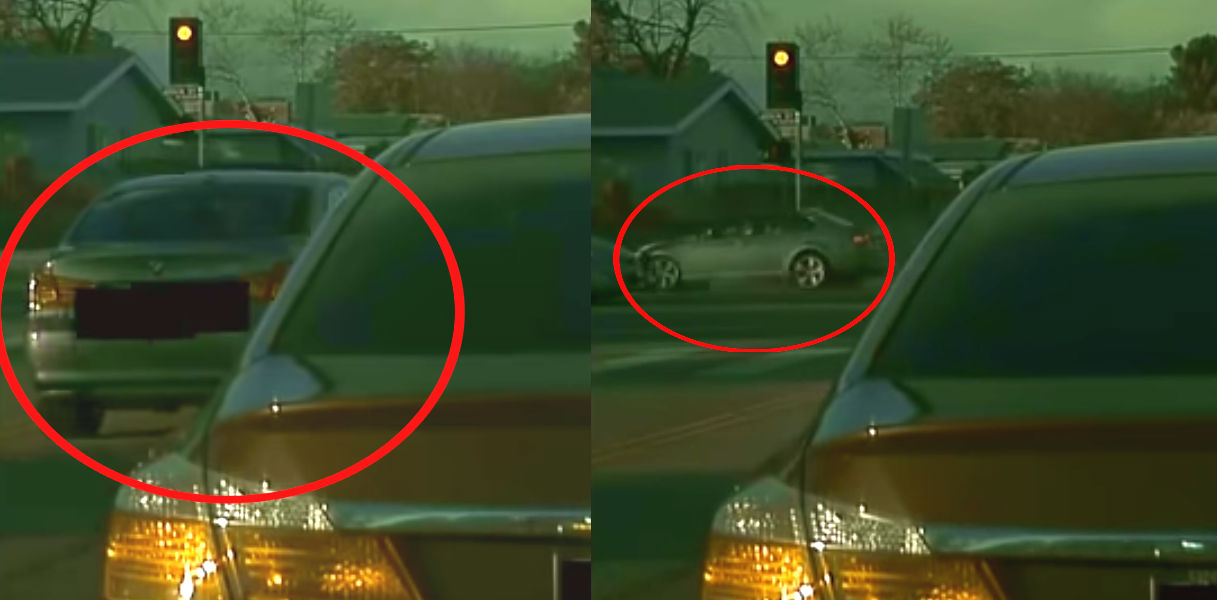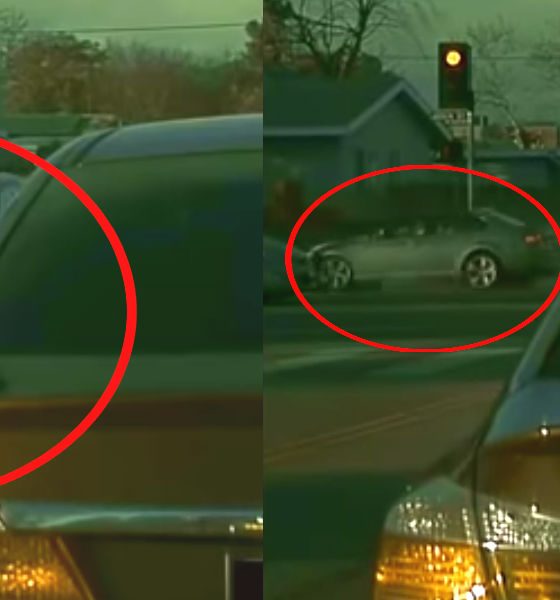

News
Tesla Dashcam captures instant karma after angry driver assaults Model 3
A Tesla Model 3 owner is thanking his electric car’s built-in dashcam after the feature proved useful as evidence for a road rage incident that resulted in a multiple-car accident. A video of the nail-biting incident, which featured a frightening instance of instant karma, was recently shared on YouTube.
The Model 3 owner, who goes by the username Mid-Range Tesla Model 3 Adventures on the video streaming platform, noted that the driver of the offending vehicle, a BMW sedan, became enraged after he was called out for almost hitting the electric car in Lassen St & Haskell Ave, Los Angeles, CA. This resulted in the driver getting enraged, to the point where he reportedly attempted to pick a fight against the Tesla owner. As noted by the Model 3 owner in the video’s description, he decided it was best to ignore the angry driver.
This only made the BMW driver even angrier. Upon realizing that he was being ignored, the angry driver opted to spit and throw an object at the Mid Range Model 3. By this time, the Tesla owner was attempting to record the driver on video using a smartphone (the incident transpired before Tesla rolled out the recently-released Sentry Mode/Dog Mode/Dashcam side-video update). When the BMW driver noticed that he was about to get recorded on video, he promptly returned to his car and drove off — running a red light in the process.
Instant karma soon ensued. As soon as the BMW driver rushed forward, he ended up crashing with another vehicle. The impact, which reportedly resulted in the car that hit the BMW crashing into two other vehicles on another lane. Ultimately, the angry driver’s road rage resulted in an accident that damaged his vehicle and three other cars.
Fortunately, the occupants of the vehicle that hit the red-light-running BMW were unharmed following the frightening road rage incident. In a comment on the YouTube upload, the Mid Range Model 3 owner noted that he opted to stick around so that he could coordinate with the drivers affected by the angry driver.
“I parked far away so the guy wouldn’t take a second attempt at my car. Asked the three people who got hit for their emails and the cops. That way, I could forward them the footage that night once the car finished transferring it all to the USB stick,” the Model 3 owner wrote.
Ultimately, this frightening incident of instant karma proves just how useful Tesla’s built-in dashcam feature is in the event of an accident. Nevertheless, this also highlights the further improvements that Tesla can introduce for the system. Tesla could also enable recording capabilities for the rear camera, which would be useful in instances where the vehicle gets rear-ended. A more convenient way for accessing dashcam footage, perhaps through the Tesla mobile app, would also make retrieving and sharing dashcam recordings easier.
Watch an angry driver’s instant karma unfold after assaulting a Tesla Model 3 in the video below.

News
Tesla starts showing how FSD will change lives in Europe
Local officials tested the system on narrow country roads and were impressed by FSD’s smooth, human-like driving, with some calling the service a game-changer for everyday life in areas that are far from urban centers.

Tesla has launched Europe’s first public shuttle service using Full Self-Driving (Supervised) in the rural Eifelkreis Bitburg-Prüm region of Germany, demonstrating how the technology can restore independence and mobility for people who struggle with limited transport options.
Local officials tested the system on narrow country roads and were impressed by FSD’s smooth, human-like driving, with some calling the service a game-changer for everyday life in areas that are far from urban centers.
Officials see real impact on rural residents
Arzfeld Mayor Johannes Kuhl and District Administrator Andreas Kruppert personally tested the Tesla shuttle service. This allowed them to see just how well FSD navigated winding lanes and rural roads confidently. Kruppert said, “Autonomous driving sounds like science fiction to many, but we simply see here that it works totally well in rural regions too.” Kuhl, for his part, also noted that FSD “feels like a very experienced driver.”
The pilot complements the area’s “Citizen Bus” program, which provides on-demand rides for elderly residents who can no longer drive themselves. Tesla Europe shared a video of a demonstration of the service, highlighting how FSD gives people their freedom back, even in places where public transport is not as prevalent.
What the Ministry for Economic Affairs and Transport says
Rhineland-Palatinate’s Minister Daniela Schmitt supported the project, praising the collaboration that made this “first of its kind in Europe” possible. As per the ministry, the rural rollout for the service shows FSD’s potential beyond major cities, and it delivers tangible benefits like grocery runs, doctor visits, and social connections for isolated residents.
“Reliable and flexible mobility is especially vital in rural areas. With the launch of a shuttle service using self-driving vehicles (FSD supervised) by Tesla in the Eifelkreis Bitburg-Prüm, an innovative pilot project is now getting underway that complements local community bus services. It is the first project of its kind in Europe.
“The result is a real gain for rural mobility: greater accessibility, more flexibility and tangible benefits for everyday life. A strong signal for innovation, cooperation and future-oriented mobility beyond urban centers,” the ministry wrote in a LinkedIn post.
News
Tesla China quietly posts Robotaxi-related job listing
Tesla China is currently seeking a Low Voltage Electrical Engineer to work on circuit board design for the company’s autonomous vehicles.

Tesla has posted a new job listing in Shanghai explicitly tied to its Robotaxi program, fueling speculation that the company is preparing to launch its dedicated autonomous ride-hailing service in China.
As noted in the listing, Tesla China is currently seeking a Low Voltage Electrical Engineer to work on circuit board design for the company’s autonomous vehicles.
Robotaxi-specific role
The listing, which was shared on social media platform X by industry watcher @tslaming, suggested that Tesla China is looking to fill the role urgently. The job listing itself specifically mentions that the person hired for the role will be working on the Low Voltage Hardware team, which would design the circuit boards that would serve as the nervous system of the Robotaxi.
Key tasks for the role, as indicated in the job listing, include collaboration with PCB layout, firmware, mechanical, program management, and validation teams, among other responsibilities. The role is based in Shanghai.
China Robotaxi launch
China represents a massive potential market for robotaxis, with its dense urban centers and supportive policies in select cities. Tesla has limited permission to roll out FSD in the country, though despite this, its vehicles have been hailed as among the best in the market when it comes to autonomous features. So far, at least, it appears that China supports Tesla’s FSD and Robotaxi rollout.
This was hinted at in November, when Tesla brought the Cybercab to the 8th China International Import Expo (CIIE) in Shanghai, marking the first time that the autonomous two-seater was brought to the Asia-Pacific region. The vehicle, despite not having a release date in China, received a significant amount of interest among the event’s attendees.
Elon Musk
Elon Musk and Tesla AI Director share insights after empty driver seat Robotaxi rides
The executives’ unoccupied tests hint at the rapid progress of Tesla’s unsupervised Robotaxi efforts.

Tesla CEO Elon Musk and AI Director Ashok Elluswamy celebrated Christmas Eve by sharing personal experiences with Robotaxi vehicles that had no safety monitor or occupant in the driver’s seat. Musk described the system’s “perfect driving” around Austin, while Elluswamy posted video from the back seat, calling it “an amazing experience.”
The executives’ unoccupied tests hint at the rapid progress of Tesla’s unsupervised Robotaxi efforts.
Elon and Ashok’s firsthand Robotaxi insights
Prior to Musk and the Tesla AI Director’s posts, sightings of unmanned Teslas navigating public roads were widely shared on social media. One such vehicle was spotted in Austin, Texas, which Elon Musk acknowleged by stating that “Testing is underway with no occupants in the car.”
Based on his Christmas Eve post, Musk seemed to have tested an unmanned Tesla himself. “A Tesla with no safety monitor in the car and me sitting in the passenger seat took me all around Austin on Sunday with perfect driving,” Musk wrote in his post.
Elluswamy responded with a 2-minute video showing himself in the rear of an unmanned Tesla. The video featured the vehicle’s empty front seats, as well as its smooth handling through real-world traffic. He captioned his video with the words, “It’s an amazing experience!”
Towards Unsupervised operations
During an xAI Hackathon earlier this month, Elon Musk mentioned that Tesla owed be removing Safety Monitors from its Robotaxis in Austin in just three weeks. “Unsupervised is pretty much solved at this point. So there will be Tesla Robotaxis operating in Austin with no one in them. Not even anyone in the passenger seat in about three weeks,” he said. Musk echoed similar estimates at the 2025 Annual Shareholder Meeting and the Q3 2025 earnings call.
Considering the insights that were posted Musk and Elluswamy, it does appear that Tesla is working hard towards operating its Robotaxis with no safety monitors. This is quite impressive considering that the service was launched just earlier this year.








